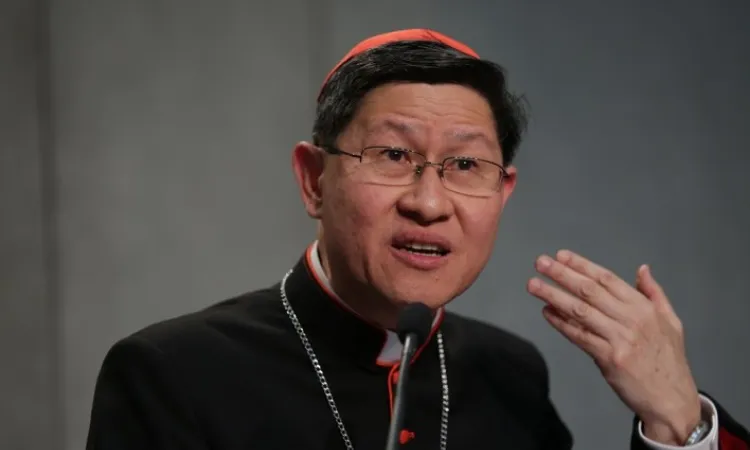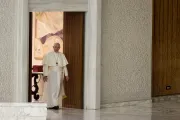For this reason, the Pope wanted to add Cardinal Tagle among the Cardinal Bishops – and it is almost entirely a functional rationale, which also gives a glimpse of the lines along which the Curia reform has been thought out.
Cardinal Beniamino Stella got the rank of Cardinal-bishop differently: he was assigned the See of Porto-Santa Rufina, which belonged to Cardinal Roger Etchegaray until the Frenchman passed away in September 2019.
Cardinal Stella thus traditionally joins the order of Cardinal Bishops. His elevation in rank is also a particular sign of appreciation by Pope Francis. Cardinal Stella is considered one of the most influential of Pope Francis's advisers.
Pope Francis's pick for the vice Camerlengo is surprising.
More in A Vatican Observer
The Pope appointed Archbishop Ilson Montanari for the post. Archbishop Montanari is the Secretary of the Congregation of Bishops, be he is also the Secretary of the Conclave. So, in case of a conclave, some issues might arise.
The Camerlengo chairs the Apostolic Camera – Chamber – and manages the Church's temporal goods during sede vacante. The Camerlengo is a Cardinal, and so he takes part in the Conclave. During that period, he cannot lead the Apostolic Camera. During the Conclave, the vice Camerlengo takes over the responsibility of the management of the temporal goods.
In this particular case, the vice Camerlengo will be in the Conclave, too. So, who will lead the Apostolic Camera during the Conclave?
It is not a minor detail, and the fact that it appears to have been overlooked is possibly revealing: Pope Francis, in the end, appoints the people he trusts. Practical-institutional issues can be addressed afterward.
Pope Francis, in other words, does not think of the institution per se. He mostly thinks of an institution as tied to its leader and an extension of the leader's personality. Pope Francis therefore often seems to understand his role as that of the guarantor of the institution thus conceived. He articulated this vision somewhat painstakingly, when he outlined his reform vision in his Christmas addresses to the Roman Curia. He did so when he opened the Vatican judicial year, despite investigations into the Financial Intelligence Authority and Secretariat of State. He also did so again, when he decided to fire all the people involved in the FIA/State investigation, though there were still no judgments or even formal charges against the people he dismissed.
Pope Francis has no filters, and he likes to make decisions himself. It is unlikely that the Pope wants to design a successor. He knows that the Church has no dynasties and that he cannot be sure that everything will go according to his plans. The Pope's most trusted circles are not among cardinals. Those who are, must rely on a more prominent structure and an institution that goes beyond centuries.
Pope Francis's strategy cannot be, in the end, that of designating a successor or burning an enemy. Rather, Francis instead aims at expanding the electoral base. The more cardinals of his line there are, the more likely it is that his legacy will be carried forward.
(Column continues below)
Subscribe to our daily newsletter
Pope Francis's legacy, by the way, is political and geopolitical: mostly based on practical issues. Francis's guiding rationale is that the Pope can be an influential guarantor able to give voice to the poor and the marginalized. The Pope dialogues with governments and seeks to create new political and economic models. This is not a papacy that inspires ideas, nor is it an institution capable of providing frameworks beyond the practical issues.
A little hint of this rationale came at the end of Pope Francis' Urbi et orbi Easter message. The Pope concluded the message saying, off script: "These are some thoughts of mine that I wanted to share." This sentence somehow de-institutionalized that moment.
With Pope Francis, the institution is dismantled to change its profile. Pope Francis often spoke about the need for a conversion of the souls. This is how he pushes for the conversion: to dismantle to rebuild, or at least to leave the reconstruction to people he trusts.
From this perspective, the choice to co-opt Cardinal Tagle in the Order of Cardinal Bishops does not mean that the Pope is setting up Tagle as a candidate for his succession, nor that the Pope is burning his eventual candidacy. It merely means that the Pope is shaping the institution his way. There is no history or tradition to be preserved.
There is instead a new Church to be created in the Pope's image.
This is how the next Conclave is being set up: It will be a different kind of Conclave, in which none of the traditional keys to understanding papal electoral dynamics will be valid.



